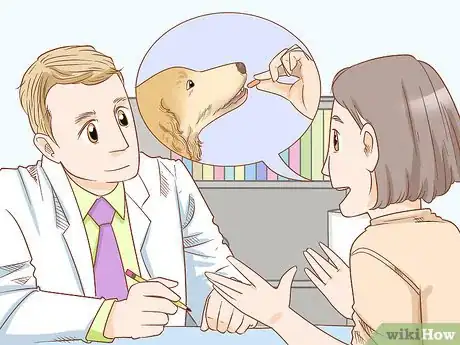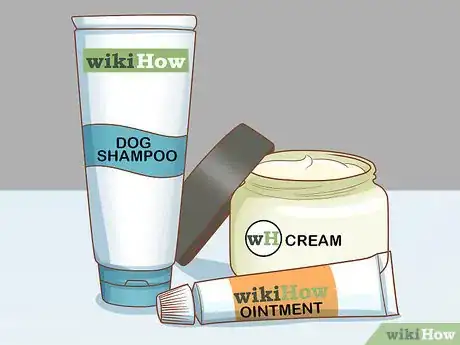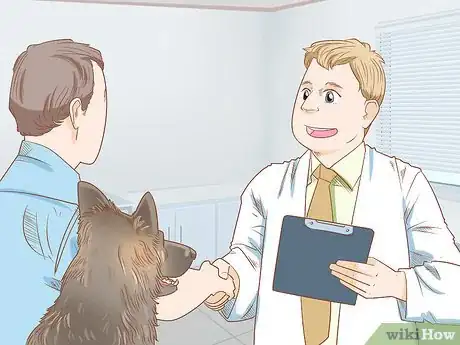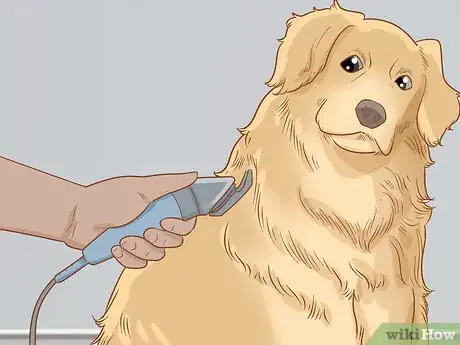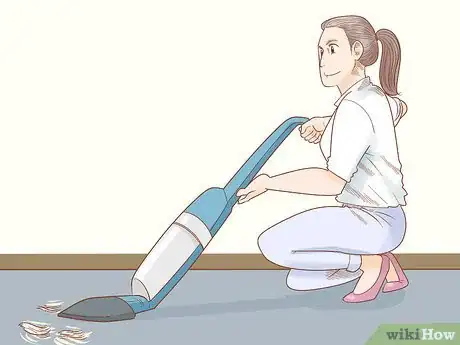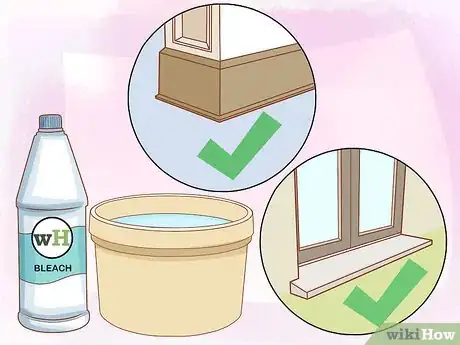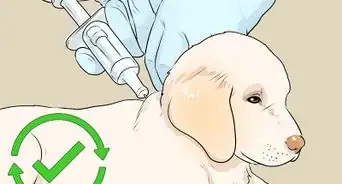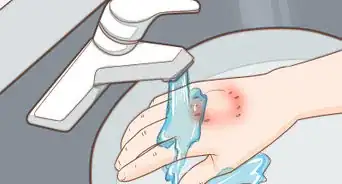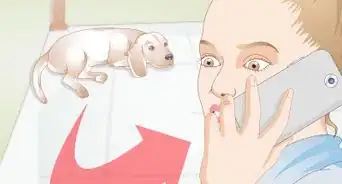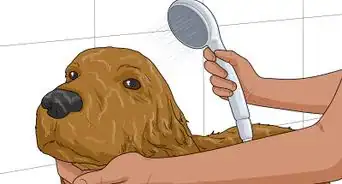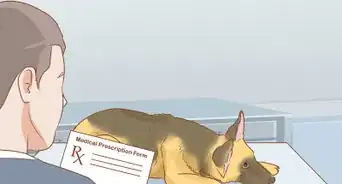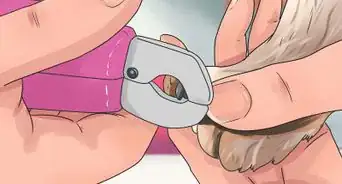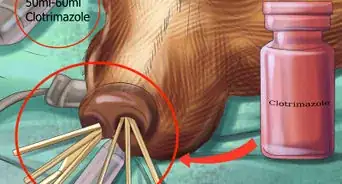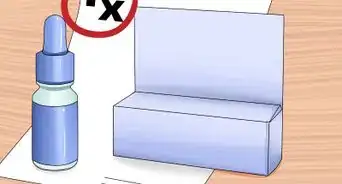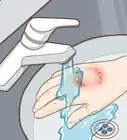This article was co-authored by Pippa Elliott, MRCVS. Dr. Elliott, BVMS, MRCVS is a veterinarian with over 30 years of experience in veterinary surgery and companion animal practice. She graduated from the University of Glasgow in 1987 with a degree in veterinary medicine and surgery. She has worked at the same animal clinic in her hometown for over 20 years.
This article has been viewed 35,534 times.
Ringworm is a highly contagious fungus that can cause hair loss in dogs. Puppies are particularly susceptible to ringworm, though dogs who are malnourished or stressed are also more likely to get it. If you notice your pooch is displaying symptoms of ringworm, such as red lesions or bald spots on its body, bring it to the vet right away. The vet can then prescribe oral and topical medication to treat the issue. You can also clean your home and keep others away from your dog so it can recover successfully from ringworm.
Steps
Getting Treatment from Your Vet
-
1Ask your vet for oral medication. Your vet will recommend an antifungal drug like griseofulvin, itraconazole, or terbinafine. Your dog will need to take the medication orally for at least six weeks for the ringworm to go away successfully.[1]
- Oral medication is usually recommended for mild cases of ringworm in dogs. You will need to give your dog the medication in pill or liquid form by mouth.
- Your vet should outline the side effects of the oral medication. Usually, the side effects of these drugs are minor.
-
2Get a medicated ointment, cream, or shampoo. Another option is a medicated ointment or cream that you apply to ringworm sores on your dog’s coat. Your vet may also recommend a medicated shampoo that you use to bathe your dog twice a week. Medicated ointments, creams, and shampoos may need to be applied for several weeks or months to be effective.[2]
- Only use medicated ointments, creams, or shampoos recommended by your vet.
- In severe cases of ringworm, your vet may prescribe an oral medication and a topical medication.
Advertisement -
3Follow your vet’s instructions on dosage and use. Your vet will tell you how long and how often you should give your dog the prescribed medication. Most medications for ringworm will need to be used for at least six weeks to several months. Do not stop treating your dog for ringworm if their symptoms clear up. This can cause the ringworm to come back.[3]
- After the course of treatment has ended, your vet will do follow up tests on your dog to confirm the ringworm is gone.
-
4Discuss clipping your dog’s hair. Your vet may also recommend that you clip your dog’s hair to reduce the spread of ringworm and speed up its recovery, especially if you have a longhaired dog. However, clipping should only be done if the infection is severe. It also puts your dog at risk of getting a more severe infection if its skin gets nicked during the clipping.[4]
- You can also ask your vet about the best way to clip your dog’s hair without nicking its skin.
- In some cases, your vet may suggest shaving the infected area on your dog’s coat to speed up healing. Ask them about the best way to do this so your dog is not at risk of getting cut or nicked.
Cleaning Your Home
-
1Mop and vacuum your home. Ringworm lives in your dog’s skin and hair, so you will need to mop and vacuum any surfaces your dog has had contact with. Vacuum carpet and furniture. Mop the floors, baseboards, stairwells, and window sills. Do a thorough clean of your home to contain the ringworm.[5]
- You should then mop and vacuum your home once a week while your dog is recovering from ringworm.
-
2Disinfect your home with a bleach solution. Combine 1 part bleach with 10 parts water. Use the bleach solution on floors, baseboards, window sills, and bleach-safe furnishings to disinfect them. The bleach will help to kill the fungus and prevent the spread of ringworm.[6]
-
3Quarantine your dog in a room that is easy to clean. Pick a room that has very few furnishings and tiled or wood floor, rather than carpet. This will make it easier for you to clean the room daily and maintain it while your dog recovers from ringworm.[7]
- Make sure you mop and vacuum the room you have quarantined your dog in at least twice a week.
Preventing the Spread of Ringworm
-
1Wash your hands before and after touching your dog. Use mild antibacterial soap. Do not put your hand in your mouth, eat food, or go to the bathroom without washing your hands first.[8]
- You can also wear gloves when you touch your dog so you do not come in contact with ringworm.
-
2Keep other pets and humans away from your dog for at least three weeks. Do not let children or other family members touch or pet your dog. Make sure other pets do not play or interact with your dog for at least three weeks so they are not at risk of contracting ringworm.[9]
- If you suspect your other pets may have ringworm, make sure you bring them to the vet for a check up. You will then need to quarantine any other pets that have ringworm, keeping them in separate rooms or areas.
-
3See your doctor if you develop any symptoms of ringworm. Ringworm can be transmitted easily to humans, especially young children, older people or people with weakened immune systems. If you notice small patches of red skin with raised, scaly edges on your body, go see your doctor right away. Your doctor can then recommend treatment for the issue.[10]
- Make sure you take the prescribed treatment for the entire time, even if your symptoms clear up. Ringworm can stay dormant for up to 18 months in humans and recur if not treated fully.
References
- ↑ https://vcahospitals.com/know-your-pet/ringworm-in-dogs
- ↑ https://www.vetwest.com.au/pet-library/ringworm-signs-diagnosis-and-treatment
- ↑ https://vcahospitals.com/know-your-pet/ringworm-in-dogs
- ↑ http://www.akc.org/content/health/articles/ringworm-in-dogs/
- ↑ https://www.vetwest.com.au/pet-library/ringworm-signs-diagnosis-and-treatment
- ↑ https://vcahospitals.com/know-your-pet/ringworm-in-dogs
- ↑ http://www.akc.org/content/health/articles/ringworm-in-dogs/
- ↑ https://vcahospitals.com/know-your-pet/ringworm-in-dogs
- ↑ https://vcahospitals.com/know-your-pet/ringworm-in-dogs
About This Article
To get rid of ringworm in your dog, start by taking your dog to the vet, since you'll need oral and topical medications to treat the infection. When you get home, keep your dog quarantined in a room that’s tiled and has very few furnishings so it’s easy to clean. Twice a week, wipe down the room’s surfaces with a diluted bleach solution to disinfect the entire area. Additionally, make sure you wash your hands before and after you touch your dog to avoid spreading the ringworm to yourself and other people. For advice from our Veterinary co-author on how to recognize the symptoms of ringworm, keep reading.
